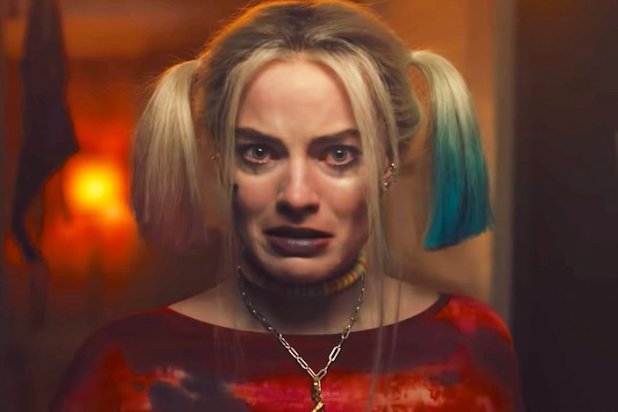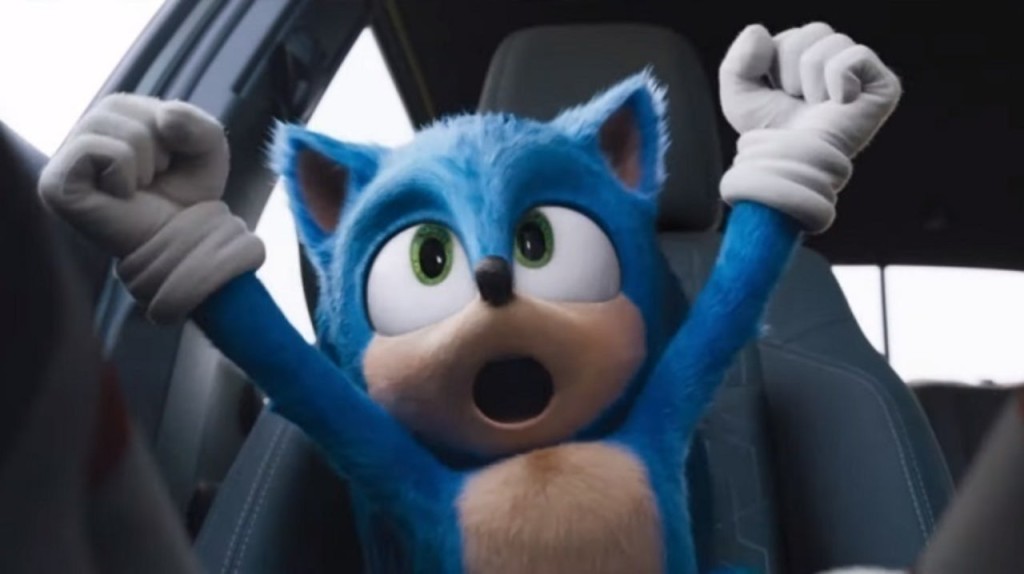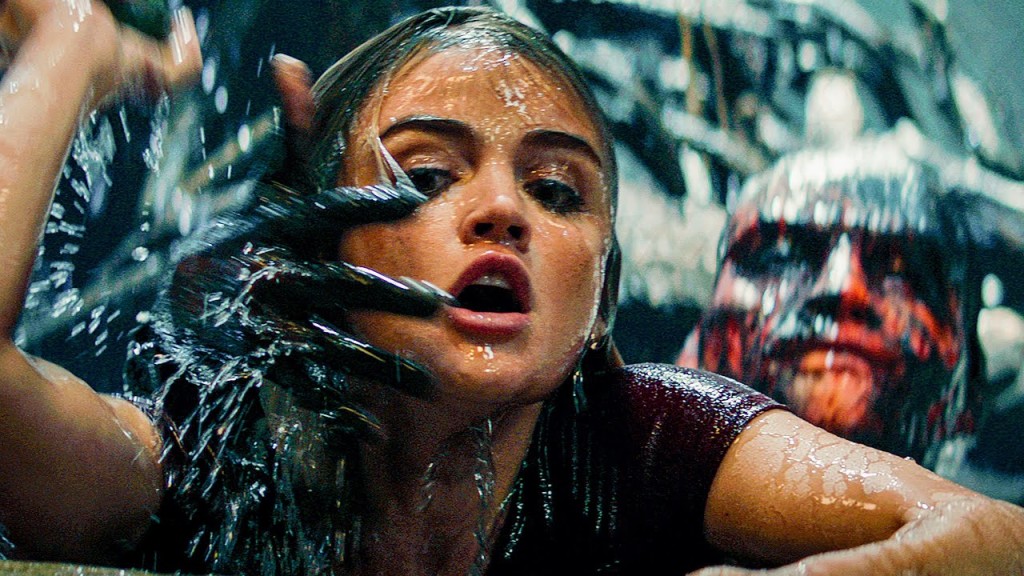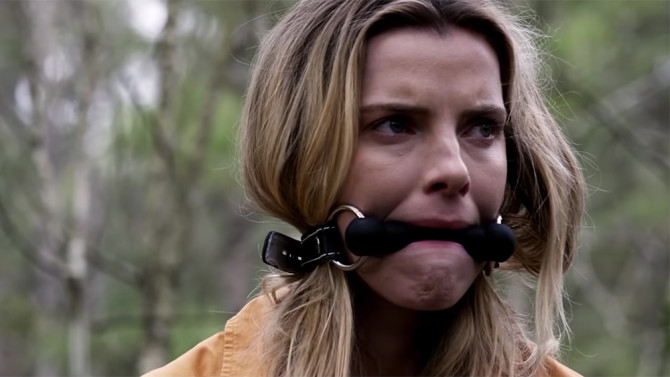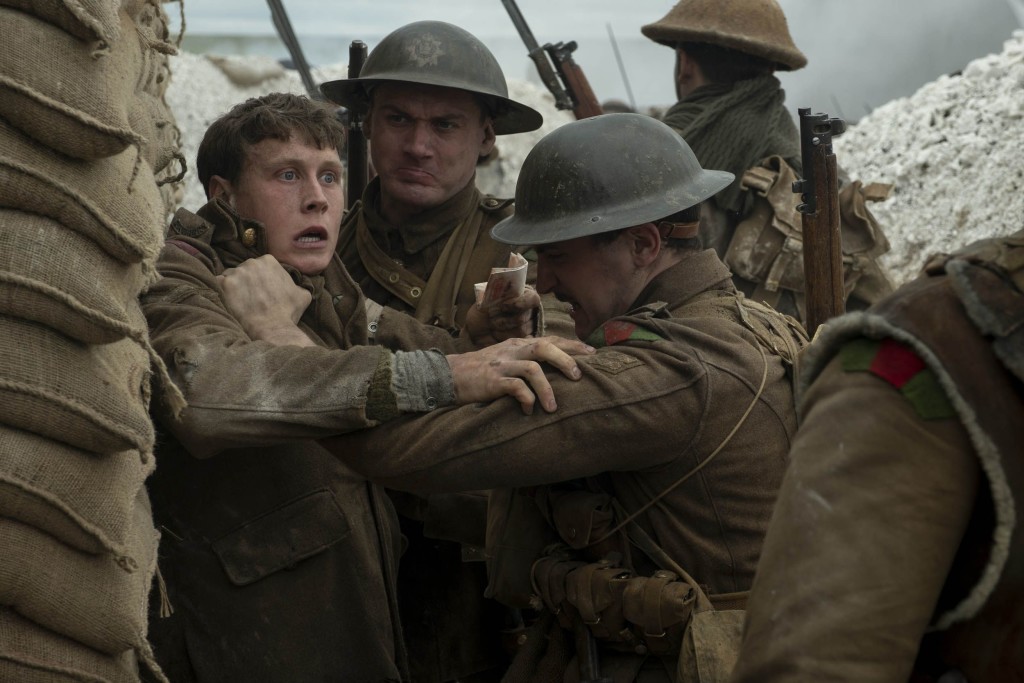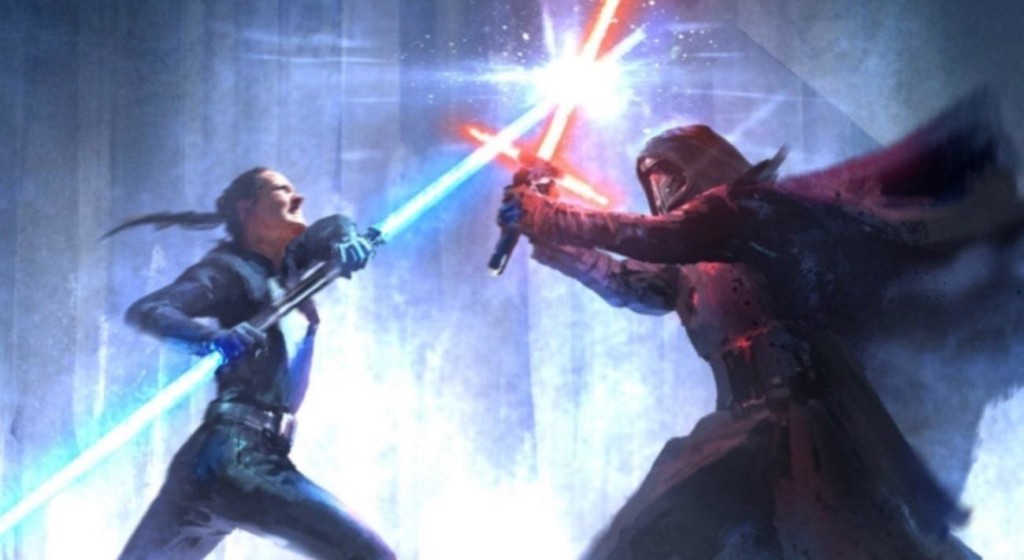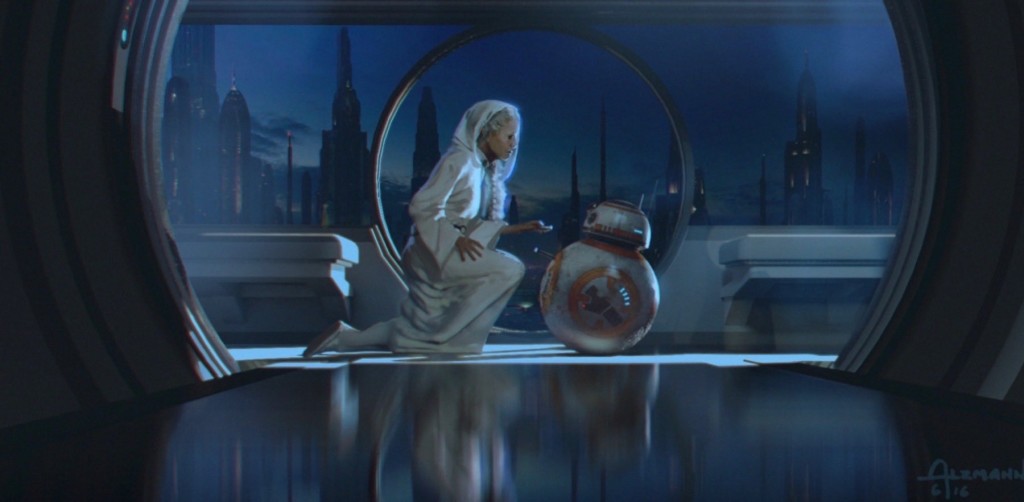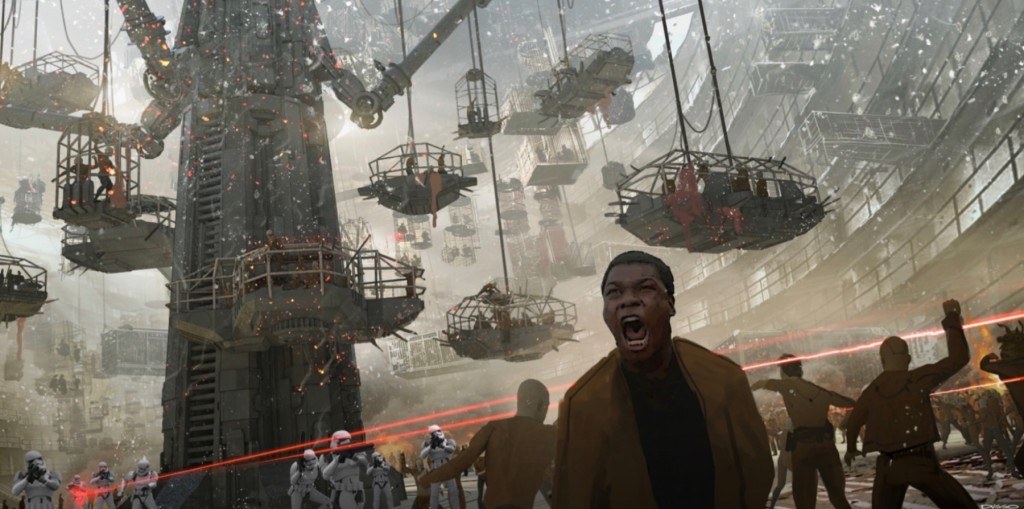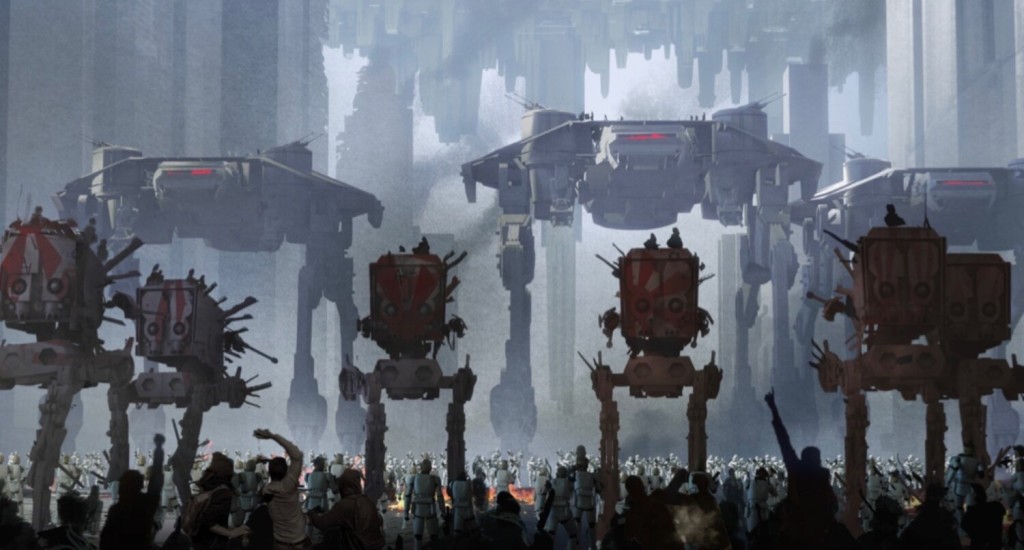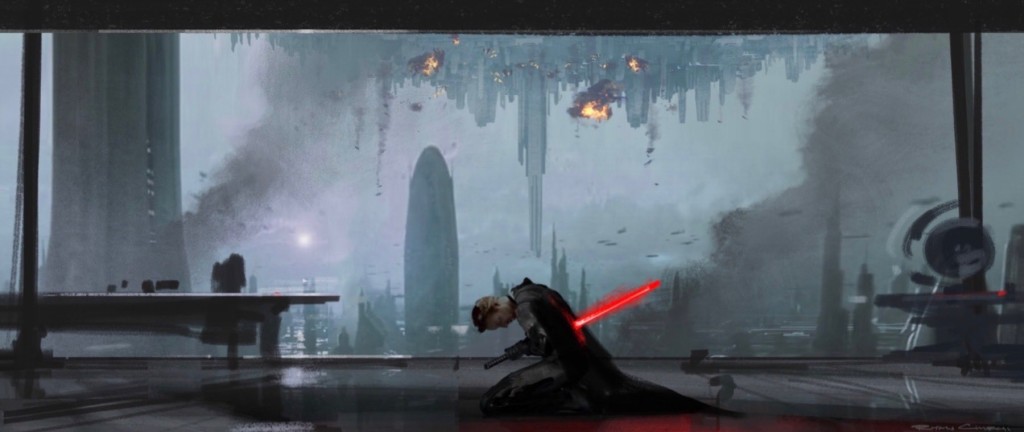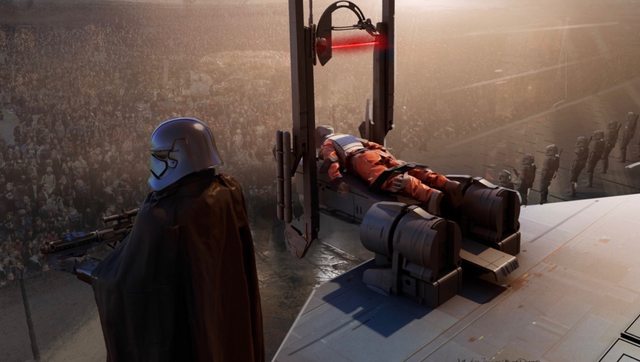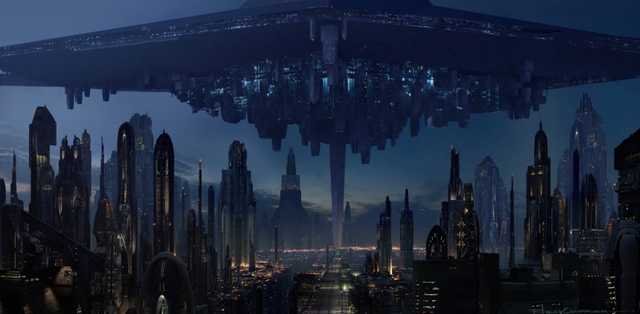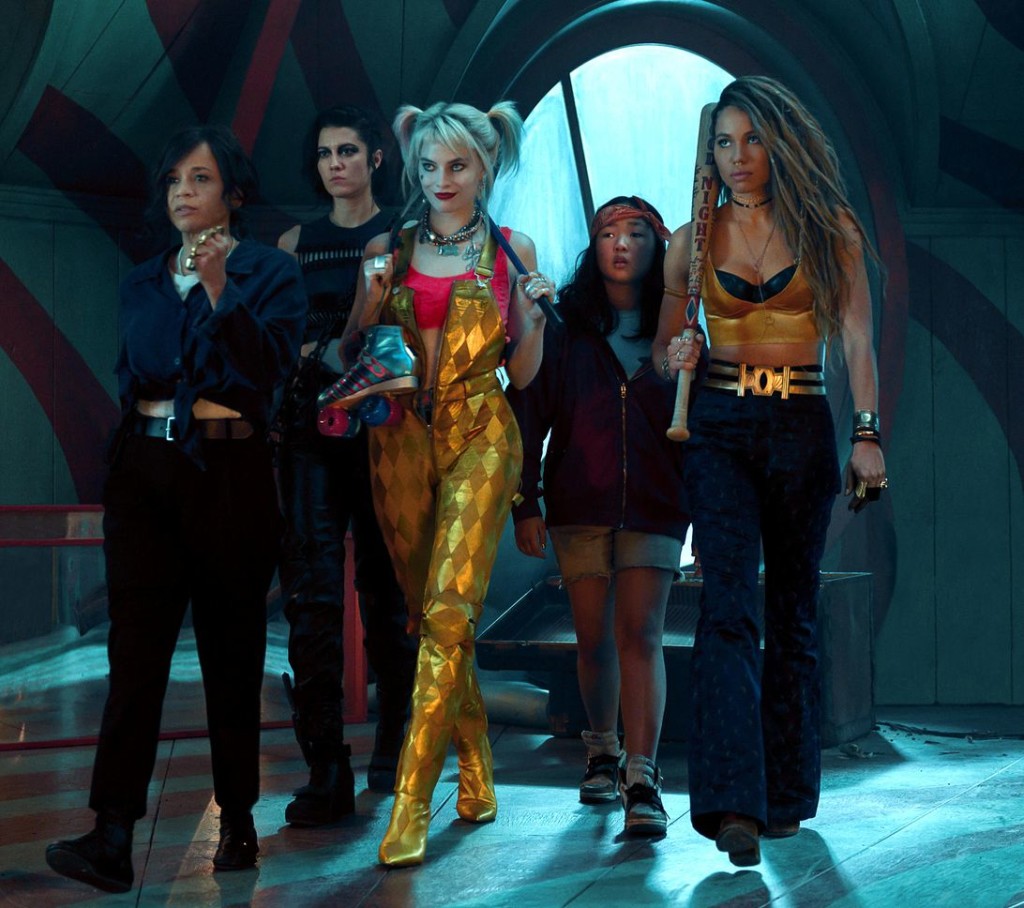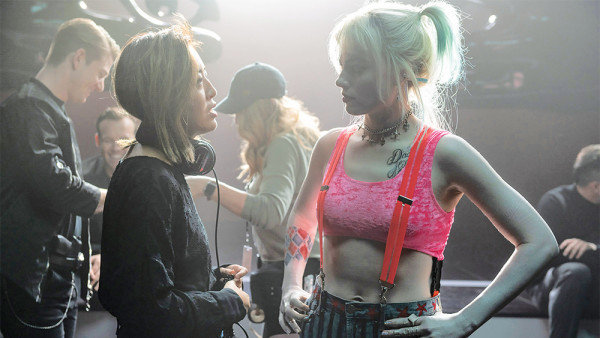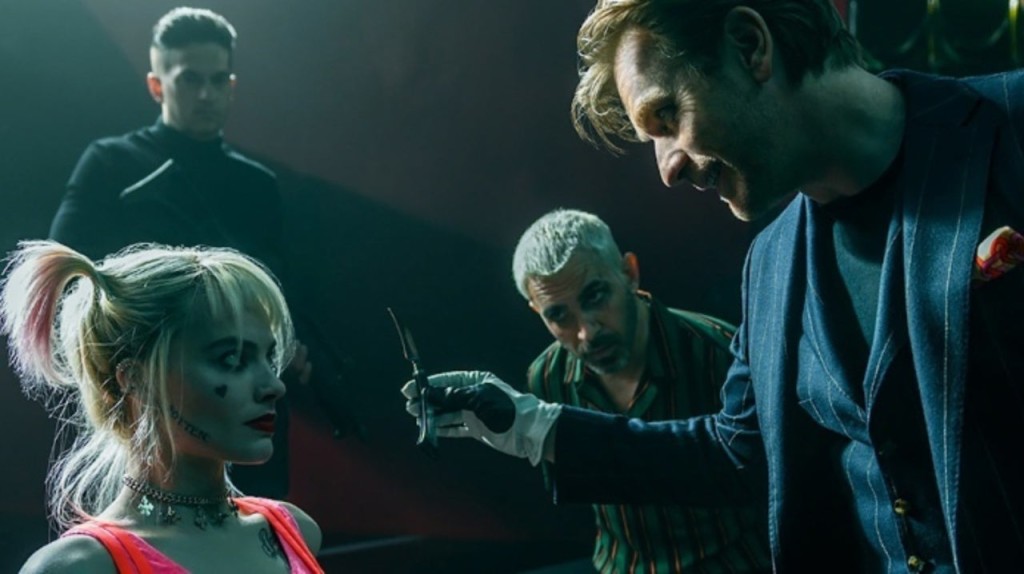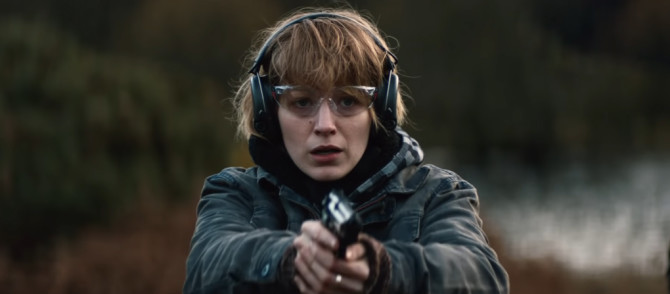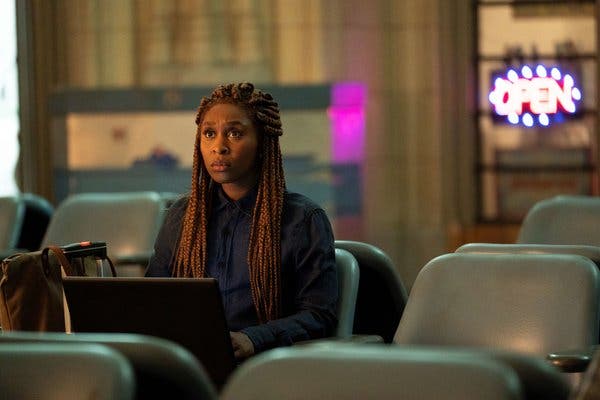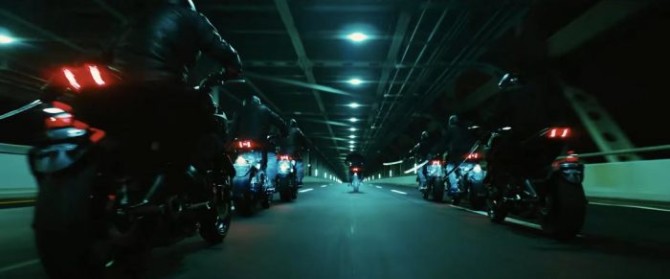Search Results for: F word
While I continue to root for Margot Robbie, a part of me is happy that Birds of Prey underperformed. The message of that film wasn’t one of exclusivity. But it certainly wasn’t inclusive. That word has to work on both ends of the spectrum. So I’m hoping that sends Hollywood a message to give us films that unite us, as opposed to divide us.
A lot of people are saying that if Birds of Prey came out on Valentine’s Day weekend, it would be a totally different box office story. The film is about a breakup so the subject matter was perfect for the holiday. It also used Deadpool as its template. That film changed the game for Valentine’s Day openings, proving that it could offer humongous box office.
I realize now what happened. Birds of Prey got greedy. They thought to themselves, if we open the weekend BEFORE Valentine’s Day, we get that opening weekend money AND we get that big Valentine’s Day Deadpool haul as well. The problem with that strategy was they weren’t able to market the movie as a Valentine’s Day film. Who knows how much of a difference it would’ve made but if the difference was 10 – 15 million dollars, that’s the difference between the trades labeling the film a bust and labeling it a solid opening. And in this town, perception is reality.
I often wonder how big a difference a release date makes. People used to think you couldn’t open an action movie on Valentine’s Day. Then Deadpool came around. Studios supposedly scratch and claw to get one of those big summer slots. But in the summer, all your second weekend box office is swallowed up by the next big shiny blockbuster. So how desirable is one of those weekends really?
James Cameron famously thanked 20th Century Fox for moving Titanic from the summer, where it was originally slated, to a winter holiday opening. The film went on to break every box office record in the book. It begs the question, what if it had opened in the summer? Would it have made way less money? Would the world not have fallen in love with Leonardo DiCaprio?
The box office comeback story of the year may go to Sonic the Hedgehog. That film was dead as a doornail when that first trailer came out. Everyone proclaimed it the single worst animation of a creature’s face in history. In one of the rare instances of Hollywood admitting they were wrong, the director, Jeff Fowler, publicly apologized then had Paramount push the release date back so they could redesign the face. Flash-forward to today and Sonic the Hedgehog had the biggest video game adaptation opening in history with a 4-day holiday haul of $65 million bucks. Which equals its Rotten Tomatoes score. Not bad.
Let’s sit on that for a second. Sonic the Hedgehog is the BIGGEST VIDEO GAME ADAPTATION OPENING EVER. This continues to be one of the bigger curiosities in the movie business. Of all the things that should be a slam-dunk to adapt, you’d think video games would be at the top of the list. They take all their cues from movies anyway. In some cases, they even improve upon them. Go watch a level from Uncharted for proof. And yet they always land in theaters with a big thud. Assassin’s Creed is such a cool movie concept. But the film was unbearable, to the point where it made you retroactively dislike the video game.
I’m not sure what the reason is. My guess is that video games are built on top of flimsy mythology. Lord of the Rings was such an extensively researched world. Everything that came out of it felt solid and believable. That set the stage for a fully-fleshed out adventure. But these video games – all they care about is cool levels. And whatever janky paper-thin backstory helps them get there, that’s good enough for them. So when you extrapolate that out into a story, all the pillars holding up your screenplay are weak and crumbly. Curious what your thoughts are on this.
Speaking of adaptations, Blumhouse underperformed this weekend with their latest film, Fantasy Island. Blumhouse is in an interesting place at the moment. They blew up because they elevated the most reliable money-making formula in Hollywood – make horror films cheaply. Before Blumhouse, a lot of low-budget horror was schlocky and cheap looking. Blumhouse gave their movies a slightly shinier production design which allowed them to play in theaters as opposed to going directly to digital.
The problem with that is, it’s an easy formula to copy. There’s nothing proprietary about what they do (for example, nobody else can make Marvel movies but Disney – you can’t replicate that). This has allowed other horror movies to eat into their market share. Lights Out. A Quiet Place. Hereditary. The only thing keeping Blumhouse above these production houses is the fact that they make so many films. This allows them to take more chances and increases the odds that one of the movies breaks through and becomes a media darling, like Get Out.
Jason Blum knows this so he’s trying to innovate and take the next step forward that no one else is thinking of. This weekend, he adapted a successful TV show in “Fantasy Island,” but instead of staying true to the material, he put a horror slant on it. That was the innovation. I don’t know what their projections were but I know they were hoping for more than 14 million for the 4-day weekend.
I actually like this idea. Any “stuck on an island” horror concept has potential. And I liked the irony of characters stepping into what they believed was a fantasy, only for it to become a nightmare. But it just didn’t capture the public’s interest. The problem when you open things up in the horror world – when you try to be bigger – is it becomes more apparent that you’re in over your head. Audiences don’t think about the lack of production value when an entire haunted house movie takes place inside the house because it’s organic to the concept. But when you start incorporating more space, more sets, bigger shots, additional characters, we can see where you don’t size up with the Marvels, DCs and Fasts and Furiouses of the world. It’s almost like by going bigger you actually look smaller.
On the plus side, Blumhouse still has The Hunt, which is finally being released. I’m curious to see how this does. They’ll be able to sell it as “the movie they wouldn’t let you see!’ And what gets people more interested in something than being told they can’t see it? What’s your prediction on The Hunt? I think it could open in the $25-30 million dollar range assuming they open wide (3000 theaters). But they might do one of those “feeler” releases (800 theaters), in which case I have no idea how much it’ll make.
A movie that continues to impress me is 1917, which has been around for 8(!) weeks and pulled in another 8 million dollars this weekend. I’m learning a lot from this film. There’s this giant potential audience of History Channel geeks – people who watch shows like “Hitler’s Bunker” and “World War 2 in color” who are dying for a larger-than-life version of what they get in those shows. Because History Channel shows have relatively low budgets. They can only do so much. So if you promise them something that’s just like those shows but bigger and more expensive with great production value, they’ll leave their houses and pay for it. 1917 proves that.
Another thing this movie’s taught me is to look for fun angles in war movies. I don’t mean fun as in “comedic.” I mean using war movies as a ride as opposed to being big glorified dramas. War films are traditionally downers. I mean, it’s war. Lots of people are getting killed. So there’s a dire tone tugging at most of these films. If you can find a way to make a war movie fun, that’s a huge advantage because people generally go to the movies to have fun and feel good.
That’s why these Oscar movies, despite getting endless advertising, often struggle to make money at the box office. Audiences know that it’s not going to be a traditional “fun” experience. The way 1917 became fun was by condensing the timeframe.
I’ve been telling you this for years. One of the easiest ways to supercharge an idea is to create a condensed timeframe. An idea that feels tired and played out can all of a sudden seem fresh and exciting if the right timeframe is applied. Where writers make the mistake is to apply this advice to the usual suspects – pairing it with an action or thriller concept – “A guy’s fake heart is actually a bomb so he’s got to get from the top of a skyscraper to the bottom in 2 hours or everyone in the building dies.” But, actually, where a tight timeframe stands out is when it’s paired with a non-traditional concept. When we think of World War 1, we don’t think of narratives taking place in less than 24 hours. That’s what helped 1917 stand out. You can apply this to any non-traditional setup. A Western. A drama. A romantic-comedy. Just in my head right now, that sounds exciting. A romantic comedy told in a single day.
As for the rest of the box office, I’m shocked to see that Jumanji crossed the 300 million dollar mark. I didn’t think anyone saw that movie due to the risky but ultimately failed choice to have The Rock and Kevin Hart mimic a couple of old men for two hours. Parasite got a small bump from its Oscar win and it’s cool to see Bong Joon-ho celebrate his most successful movie ever. Finally, in what can only be titled “The Ultimate Revenge,” Star Wars Episode 9 fell out of the top 10 to number 15, whereas Rian Johnson’s Knives Out has now pulled ahead of it, taking the number 12 spot. Why is this significant? Because Rise of Skywalker has been out for 8 weeks whereas Knives Out has been out for 11! Does this mean that Rian Johnson was right to kill Luke Skywalker all along? Should every movie from here on forward subvert expectations? Are Rey’s parents’ nobodies? I have to revaluate everything!!!
Genre: Science-Fiction/Fantasy
Premise: A ragtag group of resistance fighters infiltrate the First Order-ruled world of Coruscant in an attempt to ignite an ancient communication beacon that will recruit thousands of worlds to come join the fight and defeat the First Order.
About: Before Rise of Skywalker, there was what was supposed to be the original 9th movie in the Star War franchise, Colin Trevorrow’s, “Duel of the Fates.” But Kathleen Kennedy ain’t being Kathleen Kennedy if she’s not firing a Star Wars director so she canned Trevorrow right as the film was about to start shooting. She then called up JJ Abrams, the director of mega-hit, Episode 7, and asked him to come back and direct the final film, which he did. Many seemed confused by the fact that Derek Connolly and Colin Trevorrow received half of the writing credit on Rise of Skywalker considering Kennedy so publicly cited a bad script as the reason Trevorrow was fired. Will that mystery be solved today via a Scriptshadow review? Grab your brooms, channel the force, and let’s find out together.
Writers: Derek Connolly & Colin Trevorrow
Details: 130 pages
Yesterday’s post ended up being pretty divisive so I asked myself, “What can I do to bring everyone together again?” The answer came to me like a beam of light. What brings people together more than STAR WARS?
So I clicked open the script that was originally meant to be Episode 9 to definitively find out if Kennedy made a crucial mistake, allowing the superior Star Wars movie to be lost forever in the pages of a screenplay.
After the opening crawl tells us that things are, like, REALLY bad for the Resistance, we settle in on something called the “Kuat Orbital Ring.” Our good buddies Poe, Finn, Rose, and BB-8 have snuck into a migrant worker site run by the First Order hoping to free all the slaves. Unfortunately they get sniffed out and have to run for their lives. As they’re fighting, Rey appears out of nowhere with her two-sided lightsaber. She then gets the idea to steal one of the Imperial Starships hovering over the planet.
Rey’s able to take the ship using a stronger version of Obi-Wan Kenobi’s Jedi mind trick, informing the ship operators to do what she says. They then fly the ship back to the Secret Resistance Base that Hux is trying to sniff out from the First Order’s new headquarters on Coruscant. Leia is waiting for them and, after a little chat, someone brings up that there’s this Old Republic technology underneath the Jedi Temple on Coruscant that, if used, could alert all the planets in the galaxy to come and fight for the Resistance. The whole clan agrees to try and activate it except for Rey, who’s having visions pulling her towards Kylo.
Speaking of Kylo, he’s in the Remincore System being trained by 7000 year old Master Sith Lord Tor Valum, a dude so versed in the dark Jedi arts that he taught Master Plaegius! Valum teaches Kylo a new trick that allows him to suck the life out of other life forms. So what does Kylo do? HE SUCKS THE LIFE OUT OF TOR VALUM, turning Jedi knowledge into a form of fast food. Kylo still needs to learn some dark secret underneath the temples of this planet, however, to become all-powerful. If that happens, he will be more powerful than 1000 Death Stars, able to crush planets from anywhere in the galaxy. Yikes!
Back on Coruscant, Finn is running around the sewers, looking for this darn beacon thing. He eventually stumbles upon an underground society of displaced Coruscant residents. He asks them if they’re ready to rise up and fight and they say, you bet we are! Hux learns about their plan, though, and orders his troops to find and squash these cellar dwellers. But that’s going to be difficult, since Leia has just shown up with the stolen First Order starship – a starship filled with Resistance fighters and tons of ships and AT-AT walkers to attack the First Order with.
Rey finally arrives on the Dark Jedi planet to stop Kylo. But Kylo ain’t having any of it. The two fight and Kylo easily has the upper hand. Rey tries to recruit all her Jedi powers to stop him, but then Kylo uses Tor Valum’s life-sucking power to suck out Rey’s soul! It’s not looking good for the Resistance either, as they’re getting pummeled by the First Order on Coruscant.
Luckily, at the last second, Leia force-calls Kylo, tells him to stop being such a meanie, and Kylo gives Rey her soul back, sacrificing his own life in the process. And on Coruscant, Finn finally got that message out, so all the planets come to help the Resistance. Hux is really upset that he lost so he goes over, grabs one of the many lightsabers he’s collected over the years, ignites it (it’s a purple one!) and sepaku’s himself. The Resistance wins and Rey comes back to teach a new generation of Jedi. Oh yeah and Rey’s blind now. I don’t remember why.
Let’s deal with the obvious question first. Is this a better script than Rise of Skywalker? No. Not by a long shot. It’s not bad. It’s actually decent most of the time. But the knock against Tervorrow has always been he doesn’t surprise you. He doesn’t make any bold choices. And you can see that here. People who complained about Rise of Skywalker being generic and safe – read this script. You’ll see what actual generic and safe looks like.
The first moment I knew the script wasn’t going to be great was the opening. It wasn’t clear why we were at this Orbital Ring place. I think it was to save slave workers but I’m not positive. One of the reasons the Jabba the Hut sequence in Return of the Jedi is so strong is because the objective is so strong – rescue Han Solo. And clear! We know why they need to infiltrate Jabba’s palace. We didn’t know anything like that here.
Then there was the stealing of the Star Destroyer. In screenwriting, the bigger the objective is, the bigger the plan needs to be, the more convincing everything needs to be, the harder everything needs to be. You’re stealing a giant ship here. It can’t be as easy as waving your hand at the captain and saying, “You’ll do what we say now.” There’s even a moment where Hux asks his side general what’s going on with the ship and he says, “Oh, everyone from that ship is on leave. Only the bridge crew is inside.” In other words, they made stealing an impossible-to-steal element the easiest thing to steal in the world. Storytelling works best with the opposing logic. You want to make stealing something the hardest thing in the world because that means your characters will need to overcome genuine obstacles to succeed. Everything your characters are after in a story must be earned, not handed to. So that was a major faux pas right away.
Also, the sequence that held the most promise ended up being the biggest dud. Kylo Ren learning from this 7000 year old Sith Master. We’ve already seen Jedis learning from masters in past Star Wars stories. But we’d never seen Siths learning from Sith Masters. So there was potential to really have fun with that. But we only get a couple of scenes with this Master Tor guy before Kylo kills him. You can’t build someone up as surviving 7000 years worth of Jedi obstacles and then kill him in two scenes. It’s inconsistent.
Also, I’d heard that Luke’s ghost was going to haunt Kylo in this. That’s another cool idea that we hadn’t seen in Star Wars before. But that happens for all of one page. So it was another letdown.
There was one set piece that stood out in the script. When everyone is trying to escape the Rebel Base as its being attacked by the First Order, the First Order shoots this giant laser beam down and blows this big chunk of planet up just as Poe and Rey have left in their ship. And the Knights of Ren come in, chasing them in their ship, in a sequence that has all this floating planet debris in the way. So, for example, they’re having to zip up the side of mountains that are floating in space. One of the hardest things to do in these giant event movies is come up with original set pieces. They’ve all been done. So any time someone comes up with a fresh idea, I give them props.
Now that I’ve read the script, I think I know what happened with the firing. The thing studios and executives and producers are most terrified of is the ending. The ending has to be great. Why? Because that’s what the viewers leave with. If you have 90 minutes of a good movie and the last 30 minutes are bad, that’s what the audience remembers. So that’s what they tell everyone else ( “The ending blew.”). This is why they did a 50 million dollar reshoot of Rogue One’s ending. They wanted to get that right.
I suspect that Kennedy fired Trevorrow because of the script’s ending. It’s weak. For starters, Rey and Kylo are off on some planet in the middle of nowhere fighting each other while the war was going on on Coruscant. So it felt insignificant. Especially because they didn’t do a good job establishing the power Kylo would gain and what he would do with it. There’s a reason the ending of Star Wars is so great. We see the Death Star rounding that moon. And we know what it’s capable of once it clears the moon and has a shot at the Rebel planet. We were told earlier in Duel of Fates that Kylo will have the power to crush planets from anywhere in the galaxy, but there’s no visual representation of that to scare us. The implication is that maybe it’ll happen some day. That’s not nearly as scary as seeing a Death Moon seconds away from blowing up a planet.
We may have forgiven this if Rey’s personal battle with Kylo would’ve been great. But all the fight beats, with the exception of him taking out her soul, were lackluster. For example, we learn the real reason Rey was left on the planet was to be hidden from Kylo. It wasn’t exciting. And fights are supposed to build. It should feel like air is being pumped into a balloon that’s getting bigger and bigger. But Rey and Kylo’s fight was more like, she got tired and beaten down and the two of them sort of limped their way to the end. And then Kylo deciding to give Rey’s soul back because his mom Skyped him didn’t feel earned at all.
So I’m guessing that when Kennedy hired JJ back, her primary directive was, “We need a huge ending.” And while I don’t have inside information, I’m guessing that was the motivation for JJ bringing the Emperor back. He knew he had to make that ending huge and the Emperor offers you that opportunity. And I will say this. You may not have liked that Emperor-Rey-Kylo finale in Rise of Skywalker. But I promise you that it was a hundred times better than the Rey-Kylo ending in this script.
I’m still confused about why Connolly and Trevorrow got half-credit for Rise of Skywalker. The only connection I see between the two films is that Leia does a lot of force-Skyping in this. She’s leading the Resistance. And then the life-force grab at the end of Rey and Kylo’s fight inspired the Emperor’s life-force grab at the end of Rise of Skywalker. But outside of that, the plots are very different. I guess that mystery will have to be solved another day.
Next Star Wars we’re going to see is October, when Mandalorian Season 2 debuts. In the meantime, there is no official Star Wars movie on the Disney calendar. Will we ever see a Star Wars feature film again?
[ ] What the hell did I just read?
[x] wasn’t for me
[ ] worth the read
[ ] impressive
[ ] genius
What I learned: You don’t get points for connecting the dots – The problem multi-narrative scripts (like Duel of the Fates) have is that there are a lot of plot points and a lot of plot points that need to intersect. For example, you have Rey over on one planet, Poe over on another planet. And you know that by page 60, you need them to meet up. This forces you to create some dots that must be connected in order to get the characters to the place where you need them. This can be tough to do. And what happens in a lot of the scripts is that the writer is so happy to JUST GET ALL HIS DOTS CONNECTED, that he thinks he’s done once that’s finished. This is especially true of beginner writers who just want to be applauded for bringing everything together in a way that makes sense. Unfortunately, this is just the beginning of your work. Once you’ve connected all the dots so that they make sense, you must go back into the individual narratives and make them as strong as they can be. Duel of the Fates had a very “happy I’ve connected the dots” feel to it. Technically everything made sense. But none of the individual storylines, nor the larger storyline, were as good as they could’ve been.
Genre: Comic Book
Premise: Harley Quinn tries to figure life out after the Joker dumps her and gets caught up in a diamond theft that ignites Gotham’s newest baddie, Black Mask, to try and kill her.
About: Harley Quinn was projected to make 45-55 million dollars this weekend. That was down from the projections Warner Brothers had when making the movie, which were closer to the 75-85 million dollar range. Sadly, the film finished with a measly 33 million bucks and is considered a full-blown box office disaster.
Writers: Christina Hodson
Details: 110 minutes
Harley Quinn.
I’m not here to dance on this movie’s grave. A lot of people worked on this film and, unlike a lot of movies that come out of this town, these people really cared. It’s said that there was a woman heading up every major department in the film. And all of them felt they had something to prove.
Nobody was more determined to make Harley Quinn work than its star and producer, Margot Robbie. I saw an interview where Margot was asked what her favorite Harley Quinn tattoo was and she didn’t skip a beat, going into an extensive explanation about Harley’s first tattoo and how she got it and what it meant to her. All I could think was, “Wow, Margot really cares about this character.”
Unfortunately, somewhere along the way of this film’s development, they decided to embrace an anti-male slant. In retrospect, I guess this makes sense. The movie was being written and prepped during that rabid six month stretch where everyone thought Twitter was real life and if you were Caucasian and had an xy chromosome, you were the devil incarnate.
The first white man to enter this story is a drooling bald-headed creepy pet salesman who says he accepts sex for payment. Harley feeds him to her hyena. The next white man is an a-hole who calls Harley a slut. Harley breaks his legs. The next four white men introduced are gunned down while eating dinner by the Huntress. They don’t even have time to protest their death. The next two white men introduced try to rape Harley after a long night out.
Put simply, if you are white and a man in the Harley Quinn universe, it ain’t going to end well.
Finally, about 15 minutes into the film, we see that Harley has one Caucasian male friend – the cook who makes her daily greasy egg sandwich. The two are smiling and jovial. I thought, okay, I’m glad they’re at least portraying one white guy as cool. And then as Harley’s leaving, her voice over reveals that the man is Armenian.
Look, anybody can make any movie they want. If you want to portray an entire demographic in a negative light, you are well within your rights to do so. It’s art. It has no rules. However, you have to then be accepting when the demographic you’re destroying has no interest in seeing your movie. I mean who wants to spend two hours being told that people who like you are bad?
I guess I’m surprised because it’s such an odd business choice. You’re hating on the demographic that spends the most time in movie theaters. It’s weird. Why didn’t somebody come in and say something? “Maybe we should be inclusive and positive about all races and genders?” In the immortal words of Dana Carvey as George Bush: “Neht gunna dew it.”
Eventually, a movie emerged out of this. Sorta. The plot follows Harley Quinn as she’s coming out of a bad breakup with the Joker. The film shamelessly attempts to be this year’s Deadpool, with Harley Quinn bee-bopping her way through an endless “listen to how clever I am” voice over narration, all of which could’ve been distilled down to a single sentence (“The Joker and I broke up.”).
The plot then decides to take a bathroom break, forcing the audience and the characters to wait around for him. In the meantime we learn something about mobsters in Gotham and that someone’s going around shooting people. None of it ties into anything that you would call “relevant” but we do meet club owner Black Mask, played by the only person who comes out of this movie unscathed, Ewan McGregor. He has a few funny lines.
Finally, after a good twenty minutes, the plot waltzes back in the room with a theatrical, “fiiiiiiiiiine!” and gives us some direction. A young Korean pickpocket girl inadvertently lifts a million dollar diamond off of Black Mask’s second-in-command and Black Mask, who has captured and is about to kill Harley Quinn, for some reason hires her to go after the girl and get the diamond back.
Harley finally finds the girl, who by this point has swallowed the diamond. This means Harley can’t turn her in until the diamond passes through her system. So Harley takes her back to her hideout where, within the span of five minutes, she becomes best friends with the girl, and now she’s not so sure she wants to give the diamond or the girl up to Black Mask. Unfortunately, that doesn’t matter because Black Mask is coming to get them.
I wish I had anything good to say about this movie.
But I don’t.
Most of the badness here is baked into the script itself.
The narrative is uber-weak. It’s Harley Quinn whining for half an hour about I don’t even know what. Then, out of nowhere, a random girl steals a diamond, a diamond we only learned about two minutes prior, and then everybody is after the diamond and that’s the plot. I bring up the fact that we only learned about the diamond two minutes prior because it shows how low the stakes are in this movie. The thing everyone is after had zero significance in the audiences’ eyes. The only reason it exists is to engineer some semblance of a plot.
Then there are all these little things that conveyed how amateurish the writing was. At one point, in the middle of the first act, Harley’s getting beat up, and, while talking to us in voice over, says, “In the storytelling world, this device is known as a complication.”
Um, no it isn’t.
A complication requires that your character have an objective to complicate. At this point in the story, there is no goal. Nobody is after anything. It was just Harley Quinn rambling in voice over while we meet a bunch of people we’d later learn had nothing to do with the story. So if you’re going to try and be clever and fourth-wall breaking and bring up screenwriting vocabulary, you might want to actually learn what the device is you’re talking about.
But there’s a much bigger problem at the heart of this movie and it’s something I’ve been asking ever since it was announced that Harley Quinn would get her own movie. What is it that Harley Quinn DOES? What makes her special? In other words, why does she deserve her own movie? I spent two hours with this character this weekend and I still can’t answer that question. As far I can tell, she’s just some loudmouthed eccentric person who likes to play dress up. What is it about that that makes someone think she deserves her own movie? I don’t get it.
And then there was the directing, which vacillated between generic and extra generic. The action scenes felt like the director was learning on the job. Many sequences came across as if the crew ran out of time and had to stick in a bunch of those garden-variety stunt moves you can see in a thousand 1985 B-action movies. There were occasional flashes of inspiration, like a couple of shots where Harley beats someone up with a bat. But they’d be surrounded by tons of locked down wide-angle shots that any second year film school student at USC could’ve pulled off. Where is the vision here? Where is the specialness that separates the good directors from the wannabes – that makes you say, “Oh, I understand why this director got the job over everyone else.” Cause those qualities were not evident in the finished product.
This was a misfire on every level.
And the problems started at the conception stage. Nobody ever asked the question, “What makes this character special?” You then coupled that with an aggressive campaign to exclude a group of people. So should you really be surprised that no one showed up to your movie? Maybe there are a few lessons to learn from this if the people involved are willing to have honest conversations with themselves.
If you’re looking to watch a good female-driven movie this week, go to Netflix instead and watch Horse Girl. It’s weird and trippy and unique and it doesn’t try to paint any one demographic as bad.
Finally, props to the two screenwriting Oscar winners this year. The Academy got it right! JoJo Rabbit and Parasite were my top two favorite screenplays of the year!
[x] What the hell did I just watch?
[ ] wasn’t for me
[ ] worth the price of admission
[ ] impressive
[ ] genius
What I learned: Make sure your title and your movie line up. I know this seems obvious. But it’s a mistake I encounter fairly often. And it happened with today’s film. This movie is titled “Birds of Prey,” but it’s not about this “group” known as the Birds of Prey at all. They’re barely in the movie. This movie is 98% Harley Quinn doing Harley Quinn stuff. Have the title reflect that.
It’s the WWEEEEEEKKKK-EEEENNNND.
Which means we’ve got THREE new movies being offered up at the cinemas. And it just so happens these three films give us the perfect snapshot of what the industry is looking for. We’ve got Gretel & Hansel – our horror movie. We’ve got The Rhythm Section – our Jane Wick flick. And we’ve got The Assistant – our socially conscious entry of the week. All three films, it should be noted, have female leads.
While none of these movies will do huge box office, this is the kind of stuff that Hollywood is looking for from spec screenwriters. The Jane Wick flick might be on the way out, especially if Rhythm Section doesn’t do well. But with the well-written “Ballerina” coming soon under the John Wick banner and therefore with a ton of those Wick marketing dollars, the Girl with a Gun genre might not be dead yet.
What are your thoughts on this weekend’s crop of films?
Let’s move on to Amateur Showdown. Is it ever coming back? Or is it DEAD? Let’s find out together, shall we? On March 13th, we will have SCI-FI SHOWDOWN. My favorite genre. Or wait, wasn’t contained thriller my favorite genre? Who cares. Sci-fi is my favorite genre now.
This gives you 43 days to get your s%#@ together and polish that sci-fi gem you’ve been tirelessly working on for the last six years. Oh wait, that’s me. We’re talking about you guys. Yes, starting today, you can send in your script for Sci-Fi Showdown. Just e-mail carsonreeves3@gmail.com and put “SCI-FI SHOWDOWN” in the subject line. Include the title, genre, logline, why you think the script deserves a shot, and, of course, a PDF of the script. You’d be surprised at how many people send me entries with no script. You have until Thursday March 12th, 8:00 PM pacific time to get your entries in.
And, if you’re still getting that Last Great Screenplay Contest script ready, a reminder that the deadline is Sunday, June 14th. I need the title, genre, logline, and PDF sent to the same e-mail (carsonreeves3@gmail.com). Except the subject line should be: “LAST GREAT CONTEST.”
Meanwhile, for those who’ve got time to waste, let’s talk about The Outsider. If you haven’t been on the site for a while, I gave a glowing review to the first couple of episodes of this show. I liked it so much, I thought I was watching one of the great TV shows of all time.
Two weeks later I find myself struggling to finish Episode 4. Welcome to the challenge of TV writing, where great television can nosedive in as few as two episodes. So what happened to The Outsider? I’m not sure. But I can tell you exactly when I sensed it was in trouble.
It came in episode 3 with the introduction of a new character named Holly Gibney, a private investigator. Since this character is so all over the place, I’ll leave it to the Stephen King wiki webpage to describe her: “Holly suffers from OCD (Obsessive Compulsive Disorder), synesthesia, sensory processing disorder, and she’s somewhere on the autism spectrum.” In other words, she’s a “LOOK AT ME AND HOW WILD AND WACKY AND DIFFERENT I AM” character, one of the worst characters a writer can write.
Up until this point, the reason The Outsider was so good, outside of the fact that it had a great hook, was that it had embedded itself in authenticity. These felt like real people. This felt like a real town. These felt like real consequences. This felt like real mourning.
By writing in a totally unrealistic desperate attempt at a scene-stealing character, all that authenticity went out the window. We now had a WRITER (notice the capitalization) who wanted us to know he was WRITING. It doesn’t help that the actress is awful, but the important thing to note here is that, before, characters were authentic. I mean who’s more believable as a person than Detective Ralph Anderson? Holly Gibney might as well be in the next Bad Moms sequel (Bad Moms “Easter Shenanigans!”) she’s so outlandish and unrealistic.
It doesn’t matter what you’re writing or how good it is. The second you start writing to impress the reader – whether it’s with your purple prose or outlandish plot twists or crazy characters – you lose. Because that’s the moment when the reader or viewer becomes aware that someone is writing this. And that’s when you’ve lost your audience, when they’re no longer suspended in disbelief. I wouldn’t say that Holly Gibney single-handedly ruined this show. But it’s hard to stay invested in a show when you’re rolling your eyes half the time.
I’m going to keep trying though. Ben Mendelsohn is such a good actor that it’s worth continuing to watch just for his scenes. I mean what other actor could’ve made Captain Marvel watchable? But I’m worried. I’m going to pray this Holly abomination gets knocked off at some point. And that they can ramp up the mystery again. There were full loaves of mystery early on. Now they’re trickling little breadcrumbs at us and expecting us to clap like dolphins.
What do you guys think? Am I being too hard on it? What’s your take on the last few episodes?
Lonestarr357 had a great question in yesterday’s comments. After Scott S. eviscerated the uncomfortably detailed opening scene of I Heart Murder, Lonestarr asked this:
I’m unmistakably reminded of a script from a couple months ago and the indelible scene where the investigating hero was caught, paralyzed and fellated by the villains, who told him to back off or they would not only kill his daughter, but deposit the sperm they just extracted inside of her, so it’d look like he raped her before killing her.
I feel like this ought to be an article in the making. We’re told to create memorable scenes to get the attention of readers, but how far is too far? Does the reaction you hope to elicit fall more toward ‘This is a memorable scene! Let’s give the writer lots of money!’ or ‘This is a memorable scene. I need a fucking shower?’
This is a great question.
I know it’s a great question because as soon as I began typing up my response, I realized I didn’t know the answer. I thought I knew. But this is a far more complex question than it first appears to be.
I remember the exact scene Lonestarr is referring to. And I thought the same thing he did when I read it. This is way too far. It’s uncomfortable. It’s a weird choice. And yet, I DO REMEMBER it. I’ve read thousands of scenes since then and have forgotten almost all of them in the process. But I do remember that scene. So does that mean the scene is a success? You must be doing something right if your scene is more memorable than two thousand others, right?
This leads us to a broader question of, “What makes a memorable scene?”
Strangely, when I tried to compile a list of standout scenes over the last few years, not a lot came to mind. I even googled, “Most memorable scenes of 2019,” and a lot of the scenes they listed were okay. But I wouldn’t call them TRULY MEMORABLE STANDOUT SCENES.
A few that people seem to agree on were The Spahn Ranch scene in Once Upon A Time in Hollywood. The Baby Delivery scene in A Quiet Place. The Birthday Party at the end of Parasite. And The Beheading scene in Hereditary. Some of my personal favorites over the last few years would be the Pennywise sewer scene at the beginning of It. The failed Deadpool Team attack in Deadpool 2. And the highway border shootout in Sicario.
What do almost all of these scenes have in common? They’re SPECIFIC TO THEIR SUBJECT MATTER. The Spahn Ranch was Charles’ Manson’s spot in a movie where Charles’ Manson’s shadow is leaning over the whole movie. It made sense to set a major scene there.
What’s the worst thing you can put your characters through in a world where you can’t make a noise or you die? Force a woman to have a baby under those circumstances. A Quiet Place.
Parasite had been setting up the son’s infatuation with Native Americans the whole movie. So it was only natural to have a Native American themed birthday party that all of a sudden becomes violent and murderous.
What’s more “super heroey” than trying to put a new superhero team together. Hence a superhero interview process that ends with six heroes going after the bad guys, only for all of them to die horrible embarrassing deaths, was very specific to that genre.
When you have a movie about a clown who lives in the sewers who likes to eat children, you probably want to write a featured scene where a clown in a sewer lures a young boy in so he can eat him.
The best way to understand the power of writing a scene specific to your subject matter is to see what happens when a movie TRIES to write a memorable scene and fails. Look no further than the motorcycle chase scene in Gemini Man. Now this isn’t a bad scene. But it’s far from a memorable one. Chances are you’ll forget the details of it within 48 hours.
While I’m not saying a lack of specific subject matter is the only reason the scene is memorable, it is a major one. WE’VE SEEN MOTORCYCLE CHASES BEFORE. We just saw one in John Wick 3. And that one had freaking samurai swords. Yet you’re here trying to make a nuts and bolts motorcycle chase scene your big memorable scene of the movie? Of course it’s going to be forgotten. And the big reason for that is that motorcycle chases are a dime a dozen in action movies. You needed to come up with a scene that was SPECIFIC TO YOUR SUBJECT MATTER.
So let’s go back to Lonestarr’s original question. What is it about that fellatio sister rape-framing scene that, even though it *is* memorable, doesn’t place it in the same category as the scenes I highlighted above?
The main problem is you’re introducing SHOCK for shock’s sake. A truly shocking moment *will* be memorable. For example, I could have a character butcher a live elephant over the course of five minutes. It would be shocking. It would be memorable. But would it be the good kind of memorable? No, of course not.
These scenes also become a problem when the writer makes it more about them than the story. Again, if you look at all of the examples I used above, those scenes organically fit into the story. But when you’re having characters say and do things that are utterly disgusting and way further than they need to go, that gives off the impression that the writer is trying hard to make his scene shocking. And in those cases, it’s more about them than the story.
But that brings us to the curious case of Hereditary. As some of you remember, I hated Hereditary’s script. I thought it was the epitome of desperate shock-value writing. There’s no movie here. It’s just a collection of “look at me” shocking moments. And no moment was more “look at me” and shocking than the sister decapitation scene.
However, in director Ari Aster’s defense, it’s legitimately in the top 5 most memorable scenes of 2018. Many Hereditary fans will use it as proof positive of Aster’s genius. But this is a scene that does not pass the SPECIFIC TO ITS SUBJECT MATTER test. You could’ve written this scene into any horror film of 2018 without much story rearranging.
So that’s what’s tripping me up on creating a clear set of rules regarding MEMORABLE GOOD scenes and MEMORABLE BAD scenes. Clearly it’s in the eye of the beholder. However, I do think that focusing on creating a big clever well-set-up scene that’s specific to your subject matter is always going to yield better results than writing a shocking or vile or uncomfortable scene. Those will be memorable. But for all the wrong reasons.

